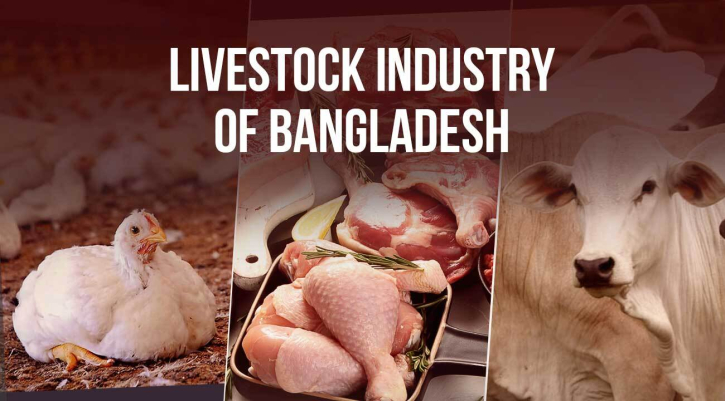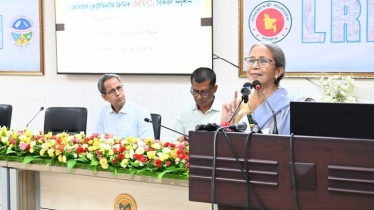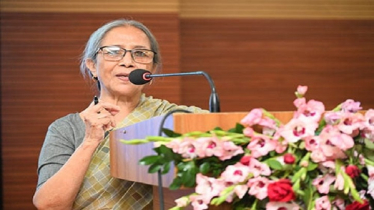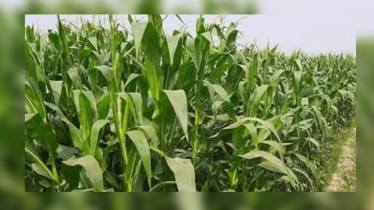
Livestock is one of the fastest growing industries in Bangladesh, contributing about 2 (1.90) percent to the country’s GDP and more than 16 (16.52) percent to the agriculture sector in FY 2021-22. Due to government support, improved medical care, artificial insemination to increase production, the use of automation and technology in firms, and increased investment, the number of livestock is constantly increasing and the growth of the sector is accelerating. In FY 2021-22, the total amount of livestock in Bangladesh exceeded 43 crores. Due to this Bangladesh is now self-sufficient in meat production and can meet the population demand for 830 grams of meat per capita. businessinspection
Overview
Livestock plays a crucial role in Bangladesh’s food security, balanced nutrition, and solving unemployment issues through creating self-employment, earning foreign exchange, increasing the fertility of agricultural land, and empowering women. The livestock sector’s contribution to Bangladesh’s GDP in FY 2021-22 has increased at an average rate of 5.39 percent over the last five years, according to the Department of Livestock Service. Although the contribution of the livestock sector to the country’s GDP is negligible, the sector has a significant contribution to meeting the country’s daily animal protein requirements. Currently, a person in Bangladesh consumes 120 grams of meat per day, which is supplied by the country’s livestock sector. Moreover, about 20 percent of the country’s population is directly, and 50 percent of the population is indirectly dependent on this sector.
Bangladesh’s livestock is divided into two main species: Ruminants and Poultry. Cattle, buffaloes, sheep, and goats are under Ruminants, and ducks and chickens are under Poultry. In addition to domestic breeds of Red Chittagong, Goyal, and Pabna cattle in Bangladesh, foreign cattle of Haryana, Sindhi, Shahial, Jersey, and Holstein Friesian breeds are also available. Along with that, a variety of hybrid breeds and categories of livestock are also being produced in this country. This includes Bos indicus and Bos taurus cattle, Nadi and Bada buffaloes, Black Bengal, Jamuna Pari, and crossbreed goats, as well as domestic sheep. Besides, there are 4 different categories of chicken available in Bangladesh: Broiler, Layer, Sonali, and Deshi. According to LightCastle, more than 58 (58.39) percent of chickens in Bangladesh are broiler breeds. Also in the case of ducks, other than domestic breeds such as Sylhet Matihans, Nageshwari, Muscovy, and Goose, there are foreign breeds such as Khaki Campbell, Indian Runner, Jinding, Cherry Valley, and Indigenous’Exotic crossbreeds. For FY 2021-22, Bangladesh had a livestock population of more than 43 crores, with 5 crores 67 lakhs of cattle, buffaloes, sheep, and goats, and 37 crores 56 lakhs of poultry.
Through government sponsorship, institutions working in the livestock sector have expanded their activities over the past decade. In addition, several new institutions have invested in this sector. Besides, many small and medium farms across the country have also joined this sector under government sponsorship. Due to this, the amount of livestock in the country has also increased. According to the Bangladesh Ministry of Livestock, Bangladesh is currently self-sufficient in livestock production. This means that the production of meat, milk, and eggs in the country has increased continuously every year for the past decade. In FY 2021-22, about 131 (130.74) lakh metric tons of milk, about 93 (92.65) lakh metric tons of meat, and more than 2335 million eggs were produced in Bangladesh. Besides, from FY 2017-18 to FY 2020-21, it was possible to meet the demand for sacrificial animals during Eid-ul-Azha only through domestically produced cattle. It is true that most large agro companies and small and medium-scale farms in Bangladesh maintain livestock such as cows, buffalos, goats, and sheep targeting Eid-ul-Azha only. Due to that, throughout the year, the country has to depend on imports to meet the meat demand of the people.
Current Trends
Branded Meat, Egg & Milk
There are many countries in the world that have branded eggs, milk, and processed meat. In Bangladesh, several agro-farms like Kazi Farms, Paragon, Purnava, and Omega have sprung up in the past few years and they are selling branded eggs on the domestic market. But, Bangladesh doesn’t have any particular brand for processed meat. However, there are some super shops like Bengal meat, Protein Market, Royal Meat, Shwapno, Agora, and Unimart, that sell prepared poultry and meat through their physical stores and online shops. Apart from these, agro-businesses like CP and Kazi Firms are also selling ready-to-eat and ready-to-cook meat.
Use of Technology
It has been common practice on the big poultry farms of the country to use machines such as hatching machines and chicken brooders since the beginning of the last decade. Today, these institutions use advanced technology like Automated Cleaning Robots, Egg Collecting Robots, Temperature Control Systems, Water & Feed Control Machines, and Recycling Devices. Besides that, a number of large cattle and dairy farms, such as Nahar Agro and Eon Group, are currently using IoT-based, AI-integrated devices to monitor issues such as cow, buffalo, and other livestock body temperatures, automated feeding, and disease detection. As a result, aside from ensuring the health of the cattle, it is possible to significantly reduce maternal mortality as well as improve the health of the animals, which reduces production difficulties for farms.
Reasons Behind Growth
Skilled Manpower
At present, educated unemployed youth in Bangladesh are interested in raising poultry and cattle rather than looking for employment. According to Prothom Alo, there are about 5000 modern cattle farms in and around Dhaka which are run by young entrepreneurs. Also, according to a database from Frontiersin, about 93 (92.6) percent of layer chicken poultry breeders, and more than 78 (78.3) percent of broiler chicken poultry breeders have educational qualifications ranging from secondary level education to higher. Educated farmers are able to use modern technology in their farms for managing farms properly, providing proper feed, and supplying necessary medicines. Thus, they also benefit from this development, and the livestock sector is rapidly expanding.
Increasing Protein Consumption
Bangladeshi consumers have become aware of protein-rich foods due to their increased affordability. In the past, people were unable to afford beef or goat meat because of the price. Thus, poultry meat was consumed more than these protein foods because of their relatively low prices. Currently, due to an increase in per capita income, affordability has increased. In addition, consumption and demand for meat like beef and mutton are increasing along with poultry. Meanwhile, according to the data of The Hotel and Restaurant Survey 2020 of the Bangladesh Bureau of Statistics, the number of restaurants and food chains in Bangladesh increased by 59 percent in the last decade and reached 4 lakh 36 thousand in FY 2019-20. These growing hotels and restaurants in Bangladesh require large quantities of chicken meat, beef, and mutton daily to meet the needs of customers. Thus, the constant growth of hotels and restaurants and their consumption of large quantities of poultry and meat have played a crucial role in the growth of the entire livestock industry.
Increasing Investment
The livestock sector in Bangladesh receives increasing amounts of investment every year. According to a BPICC source, investment in poultry in the 80s was only BDT 1,500 crore, which has now reached BDT 35,000 crore. It is estimated that the amount of this investment will double in the next 10 years. Moreover, the entire livestock industry is looking toward rapid growth and business opportunity, and the biggest conglomerates in the country are also interested in investing in this sector. In 2018, the Bangladesh government signed a $500 million financing agreement with the World Bank. This agreement supports the development of the country’s livestock and dairy production, as well as better market access for 20 million livestock farmers and small and medium entrepreneurs.
Government Initiatives
The government has taken a number of initiatives and campaigns to develop the livestock sector. Through the ‘Amar Bari Amar Khamar’ scheme launched in 2009, more than 13 lakh households have set up family farms by 2019. Furthermore, various training programs on agriculture and livestock farming are organized by the government. These programs play a leading role in creating a qualified workforce in this sector of the country. The Department of Livestock Services has taken a comprehensive action plan to increase milk production. It will also help to improve cattle breeds, strengthen the market for milk and milk products, ensure quality control and increase the availability of milk products. To develop the dairy industry of Bangladesh, the Department of Livestock Services is implementing several programs under the “Livestock and Dairy Production Development Project”, such as productivity enhancement, market linkage, value chain development, implementing animal insurance, and creating consumers for milk and dairy products. Moreover, artificial insemination is currently being used throughout the country to improve domestic cattle breeds and boost production. For example, the artificial insemination of high-milk-yielding buffaloes through the buffalo development project is already underway across the country. Additionally, the Directorate of Livestock has set up a total of more than 4464 specialized breeding centers across the country. In the meantime, Savar Specialized Farm has been able to produce the country’s first “Proven bull” breed which will largely fill the shortage of milk and meat. At present, there are 9 proven bulls in the country. In addition, 50 candidate bulls were also produced in order to increase the productivity of cattle. For the development of the domestic cow breed, 16 lakh 44 thousand hybrid breed calves have been bred from artificially bred cows in FY 2020-21. In order to prevent disease in these animals, a strong medical system has been developed by the government. As a result, the country’s animal health protection and production have improved.
Challenges
Prone to Disease Outbreak
Bangladesh’s livestock sector has been affected by a variety of viruses and bacteria attacks. In 2007, 2009, 2011, and 2017, Bangladesh’s poultry industry was attacked by Avian Influenza (Bird Flu). Thus, the poultry industry suffered a loss of BDT 5500 crore due to a decline in poultry consumption. There are several diseases that affect cattle throughout the year, such as scurvy, aquaphobia, PPR, blood dysentery, worms, etc. Besides, Bangladesh has only one testing lab to diagnose cattle diseases, making it challenging to serve such a large industry.
Import Dependency
Raw materials for livestock feed, including wheat, soybeans, corn, palm oil, and rice bran, are seasonal crops in Bangladesh. So to meet the demand throughout the year, they need to be imported from India, China, Russia, and South America. Furthermore, cattle and poultry are prone to disease transmission, yet most of their vaccines must be imported. However, the Bangladesh Livestock Research Institute (LRI), a research and development organization that seeks to solve livestock-related problems in Bangladesh, is still able to produce small quantities of vaccines at a local level. Because of this high dependence on imports, feed production and disease control are hampered.
Lack of Standardization
The Bangladesh Standards and Testing Institution, or BSTI, is responsible for providing certification for food product standardization in Bangladesh. However, there is no standard certification or grading system for meat and meat products. Thus, there is not yet a fully standardized quality control system for poultry or other meat products in the country. As a result, the country’s poultry sector is dominated by foreign companies. According to BPICC, 40 percent of poultry in Bangladesh is controlled by foreign companies, with a major portion under 7 foreign companies. Again, according to a source from Dhaka Tribune, the number of poultry farms operated by Bangladeshi entrepreneurs was 1 lakh 50 thousand in 2007, which has decreased to only 70 thousand by 2017. The majority of poultry in Bangladesh is controlled by large foreign and domestic companies. These companies mainly determine the price of day-old chicks, the feed price, and even the retail price of chicken. As a result, small and medium-scale farmers are constantly suffering losses.
Future Opportunities
The global halal food industry is expected to grow at a rate of 10.83 percent from 2020 to 2027. While Saudi Arabia is the largest market for halal food, the list also includes many other countries in the Middle East and Africa, such as Malaysia, the United Arab Emirates, Indonesia and Egypt. The global halal food market has already reached $1.17 trillion. According to TBSnews, there are currently 100 companies in the country that produce as many as 700 different halal products. In FY 2020-21, Bangladesh exported a total of $1 billion worth of halal food and cosmetic products. Based on the information provided by the Ministry of Commerce, Bangladesh has the opportunity to export halal food worth around $10 billion. In addition, the organic meat market in the world was $15.44 billion in 2021, which increased by 6.4 percent to reach 16.42 billion dollars in 2022. If BSTI sets international standards for halal and organic food in the country, international restaurant chains and five-star hotels in the country will be able to source raw materials locally without depending on imports. In addition, the country also has a strong demand for organic and halal foods, which can also be easily met. In addition, the adoption of international standards will increase the export volume of these meat products to the global market and increase the country’s foreign exchange earnings.
Suggestions
To ensure a more sustainable growth of the livestock sector, the sector needs to first overcome constraints like capital shortage, raw materials and institutional credit inadequacy. Also, it needs to add value to livestock product marketing, and disease control. Moreover, the government should formulate a plan to provide low-interest loans to farmers working in this sector through public and private banks, encouraging private investment, and ensuring the quality of day-old chicks, medicines, vaccines, feed, and breeding materials through legal and regulatory frameworks.
Moreover, Bangladeshi livestock farms and established agro farms should shift their focus from Eid-ul-Azha-only production to year-round production. As a result, dependence on imported goods will gradually decrease and will eventually lead to self-sufficiency. Moreover, the use of growth hormones in cattle, buffalo and poultry breeding is quite common in Bangladesh. This causes various health issues in the human body. As a result, reducing the use of such growth hormones in the livestock sector is a priority. On the other hand, since the raw material for livestock feed in Bangladesh is dependent on imports, the price of animal feed fluctuates. A significant amount of maize is grown in Rangpur, Gaibandha, Kurigram, Nilphamari, and Lalmonirhat in Bangladesh, while soybeans are grown in Noakhali and Lakshmipur in Chittagong Division. If the production of corn and soybeans in these areas is increased, Bangladesh’s import dependence on feed raw materials can be decreased. By doing so, the price of animal feed will also be reduced. In addition, although Bangladesh produces medicines and vaccines for various cattle diseases, most of the vaccines need to be imported. Improving vaccine manufacturing facilities in Bangladesh would help to reduce dependency on foreign imports.
Bangladesh has begun implementing modern farming systems, but the farms are quite inefficient because of the lack of proper automation. This increases the cost of breeding animals on farms. Several types of farm tasks such as farm environment monitoring and adjustment, cleaning, sanitization, feeding, and repetitive tasks such as egg and milk collection can be performed using advanced technology and robotics. If these technologies are made available to small and medium businesses in rural areas, Bangladeshi farms will be able to produce and operate more efficiently. In addition, farm management costs will be greatly reduced. In this way, Bangladesh’s livestock industry can focus on exporting processed meat abroad as well as meeting the country’s overall needs.





